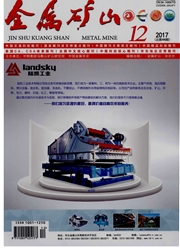

 中文摘要:
中文摘要:
淀粉是赤铁矿反浮选工艺中常用的赤铁矿抑制剂,而废啤酒酵母溶解相中含有与淀粉中相似的极性基团。为此,以赤铁矿和石英单矿物为试样、油酸钠为捕收剂,考察了废啤酒酵母溶解相在浮选过程中对赤铁矿的抑制作用。结果显示:对单一赤铁矿体系,在pH=9条件下,赤铁矿的上浮率随废啤酒酵母溶解相用量的增加而下降,直至被完全抑制;对赤铁矿、石英共存体系,在pH=11.88和采用活化剂氯化钙条件下,废啤酒酵母溶解相可使赤铁矿的上浮率降到2.47%,而石英的上浮率最高达72.5%。这一结果证明,废啤酒酵母溶解相是实现赤铁矿与石英反浮选分离的良好抑制剂。
 英文摘要:
英文摘要:
Starch is a commonly used hematite depressor in reverse flotation of hematite and dissolved waste Saccharomyces Cerevisiae contains a polar group similar to starch. Therefore, with single minerals of hematite and quartz as samples and sodium oleate as collector, an investigation is made on the depression effect of the dissolved phase in waste saccharomyces cerevisiae on hematite. The result shows that in single hematite system, at a pH : 9, the floating rate of hematite decreases with the dosage of the dissolved component in waste saccharomyces cerevisiae until the hematite is fully depressed. In the hematite and quartz coexistence system, at a pH = 11.88 and when calcium chloride is used as activator, the floating rate of hematite can be reduced to 2.47% while that of quartz can be as high as 72.5%, indicating that the dissolved component in waste saccharomyces cerevisiae is a good depressor for the separation of iron from quartz by reverse flotation.
 同期刊论文项目
同期刊论文项目
 同项目期刊论文
同项目期刊论文
 期刊信息
期刊信息
